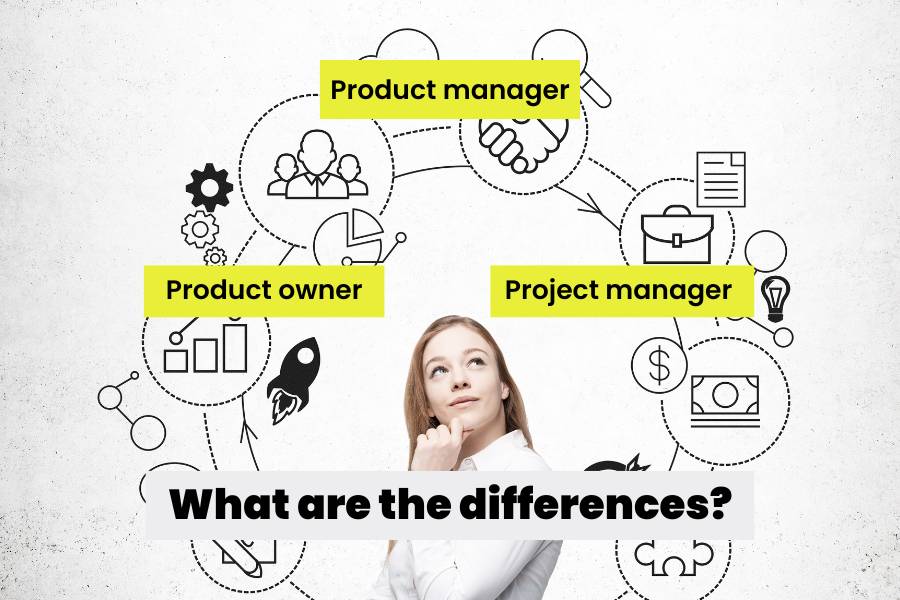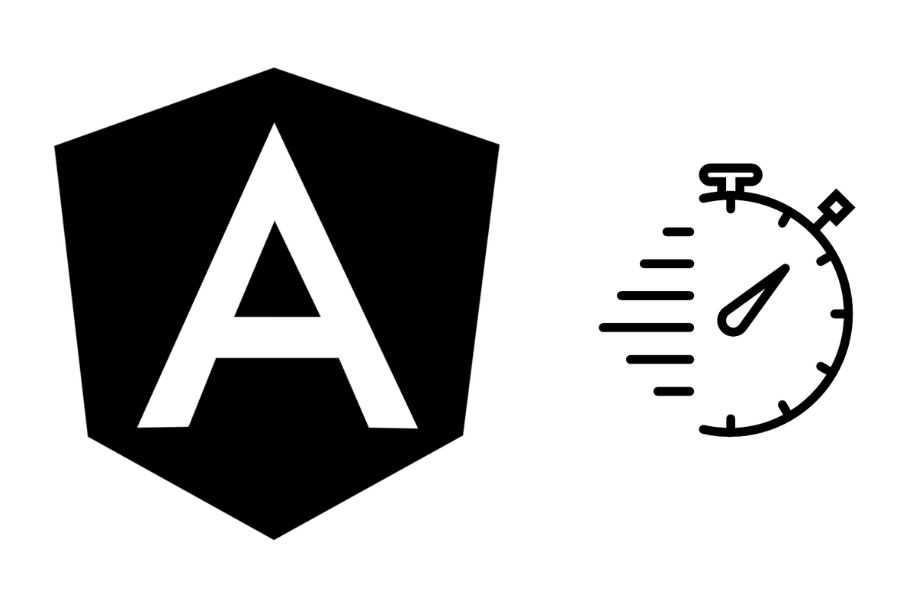There is considerable confusion surrounding the roles of a product owner, project manager, and product manager, their differences, and where they overlap. What adds to the general confusion is that it can be challenging to come up with universally accepted definitions of these roles.
Depending on the size and organization of the company, a product manager can sometimes cover the work of all three roles. However, a company should aim to make a clear distinction between these roles whenever possible.
This article will help you properly understand these three roles that should work in close collaboration to bring the product to the market that customers will love.
What is the difference between a project and a product?
Before diving deeper into the differences between the three aforementioned roles, we should first get the difference between a project and a product out of the way. Simply put, a product is an item or service you sell to serve customers’ needs. It can be an end result of single or multiple projects.
- A project includes specific operations designed to achieve a single goal. Since a project is temporary, it has a defined beginning and end, designated resources, and a team of people that may not usually work together. After the project has ended, the team can be assigned to new projects with new people.
- A product can refer to a good, service, application, platform, system, etc. It should solve problems or meet specific customer and business needs. Oftentimes, the same group of people maintains the product regularly. In software development, a product is often software that includes maintenance and upgrades. If you decide to outsource software development, find out why you should outsource to Serbia.
There has been a drastic shift to agile working methods in recent years. When it comes to delivering customer value, another shift has gained momentum. Over the past few years, businesses have started looking for ways to shift their project mindset to a product-based mentality. This shift can partly be attributed to the success of the book “Project to Product” by Mik Kersten.
Product Owner, Project Manager, Product Manager – how do they differ?
This section will attempt to explain each of these roles within an organization in detail. Despite their differences, it’s vitally important that these roles work closely to produce the desired results. Also, find out about the importance of having one provider for all phases of the software development project.
Who is a product owner?
In an agile project team, a product owner is irreplaceable. They play a massive role in maximizing product value. The product owner is also in charge of enhancing stakeholder satisfaction. The product owner needs to be an attentive listener, a great leader, and possess critical thinking and decision-making skills.
These are some of the responsibilities of a product owner:
- defining the product vision for the development team
- prioritizing items on a product backlog
- creating user stories
- managing effective communication between stakeholders and the development team
- answering questions and clarifying requirements
- managing the release process
- prioritizing features
- reporting on progress
The product owner is not responsible for building a roadmap. However, they collaborate with the product manager when reviewing the road map. The product owner needs to ensure that priorities are aligned with organizational goals since they are responsible for the project outcome.
They also work in close collaboration with the development team. The product owner plans sprints according to the stakeholders’ objectives. Sometimes they may work with UX designers when they need to ensure that the technical infrastructure and the design perfectly embody the product’s goal. Sipod has considerable experience with product development, and you can read one of our case studies here.
Who is a project manager?
A project manager has an extensive role. They oversee the entire project and ensure it is done on time. Since they have a vast range of responsibilities, project managers have to be highly organized and goal-oriented.
The project manager’s responsibilities are:
- planning, execution, and completion of the project
- managing financial resources needed for project execution
- ensuring that teammates state on schedule and meet deadlines
- defining a project roadmap for time management and resource allocation
- risk management – foreseeing and eliminating potential risks
- coordinating complex work across different teams and departments
- keeping everyone motivated and ensuring they stay on the right track
The project manager is responsible for leading the entire project and managing people and resources. For this reason, the project manager needs to be able to resolve conflicts, take on leadership, and showcase creative thinking and adaptability. They also need organization, time management, and effective communication skills.
Product owner vs. project manager
Although these two roles are essentially different, some of their responsibilities overlap in some organizations. These are some of the similarities between the two roles:
- They both steer the team toward achieving the common goal.
- Both the product owner and the project manager work with cross-functional teams.
- They are both involved in a whole project life cycle.
- Both have to deal with time, budget, and scope, while project managers do this daily.
According to the SCRUM definition, the product owner and the project manager should not exist within one organization simultaneously. The way SCRUM operates makes the role of the project manager redundant.
The product owner is responsible for a product strategy, value maximization, and customer satisfaction. The product owner owns the product, while the project manager owns the project and is the only one with the day-to-day focus on the project. In other words, what a product is for the product owner, the project is for the project manager.
The product owner has the full authority to create the product vision. On the other hand, the project manager doesn’t build the product vision but rather crafts a plan on how to execute it in a timely manner.
Who is a product manager?
A product manager is both a visionary and a strategist who plays a pivotal role in the product management teams. Product managers connect customers, engineering, sales, marketing, and support teams.
The product manager manages the entire product lifecycle and creates the product’s roadmap. Product managers work with both internal and external stakeholders.
Some responsibilities of the product manager are:
- setting the product strategy
- defining the product vision
- complete understanding of customer needs
- analyzing the market and competitive conditions
- profit and loss responsibilities
- evaluating ideas that deliver value to customers
Product manager vs. product owner
A product manager helps define specific goals. A product owner works closely with the development team to execute these goals.
The product manager plays a strategic role with larger organizational goals in mind. The product owner assumes a more tactical position, focused on short-term improvement.
Final thoughts
The definitions of these roles and clear distinction between where one ends and another begins are bound to be the subject of intense debate, probably forever. How much these roles overlap depends from organization to organization.
What matters most is that members of your team are clear about their responsibilities and that a mutual goal unites them, and that is satisfying your customer’s needs.
Tags:





